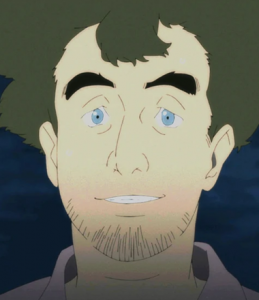Japan Sinks or Nippon Chinbotsu (Submerged Japan) is a novel by writer Sakyo Komatsu , which was published in 1973 by Kobunsha and took nine years to complete.
Japan Sinks: 2020 is an ONA (released directly on the internet) licensed by Netflix and animated by the studio Science Saru (The Tatami Galaxy, Eizouken! ) with direction by Pyeon-Gang Ho and the master Masaaki Yuasa ( Devilman Crybaby ).
The anime premiered on July 9, 2020 and has 10 episodes.
This text contains SPOILERS!
Synopsis
Shortly after the 2020 Tokyo Olympics, a massive earthquake hits Japan. Amidst the chaos, brothers Ayumu and Gou Mutou begin to escape the city with their family. The sinking Japanese archipelagos, however, relentlessly pursue the family. Immersed in extreme, life-or-death conditions, faced with the choice of finding each other or being separated—faced with this terrible reality, the Mutou brothers believe in the future and muster the strength to survive with all their might.
Unsympathetic empathy
The characters in Japan Sinks are complex, so complex that not even the screenwriter understood, which is why we see scenes with absurd changes in the characters' emotional state, like when Ayumu's father, Koichiro, dies, and the family is devastated for a few minutes and then forgets about the tragedy.
This lack of empathy for death at times took away the characters' reality. If a close relative dies, even more so in a terrible way like in Koichiro's example, the grief would be immense, not to mention all the traumatic scenes that the group witnesses.
Despite everything, this expressed grief is somewhat understandable, after all, in a stressful situation like a natural disaster, the main concern is survival.
Being an adaptation, these “cuts” were predictable.
All of the main characters work well in the story, with almost all of them having a well-developed arc. The group starts out very well-equipped with physical strength, but gradually loses members, and this doesn't seem to have any effect.
Highlighting the character Nanami Miura, who lived simply to complete her arc, giving emotional strength to Ayumu and fighting against the perverted driver, after which she dies and is IMMEDIATELY replaced by Kite.
Kite (Ryo's cosplayer from Devilman Crybaby) is an excellent character, he arrived directing the story as a Deus Ex Machina , being previously developed as a famous youtuber, he even raised some mysteries at the end, showing a girl extremely similar to him (who could just be a relative), leaving in doubt whether it was him in the past, raising the possibility of Kite being a trans man; and how did he survive in the balloon?!
Ayumu, Go and Mari Mutou
Ayumu begins the story with the problem mentioned before, the damn lack of empathy, she sees her entire team being torn apart in a room, leaves there completely distraught and then... gets over it!
The cut on her leg was the only pain she decided to feel, she ignored the rest, and despite feeling the cut, she did absolutely NOTHING to treat it, even though she had several chances to do so.
Go, a companion of hugs and punches with his sister Ayumu, a gamer who dreams of one day participating in the e-Sports Olympics, but… besides being shot by an arrow, would the story have changed a lot if Go didn't exist?
Mari, Ayumu and Go's mother, is one of the most beloved characters, being from the first scene to the last a person who put others before herself, even with a revelation at the end, but unfortunately a painful death for her children. (But like all deaths, they overcome.)
Haruo Koga, Sadboy with motives
Oddly enough, Haruo was one of the characters who best demonstrated sadness in the anime, overwhelmed by his departure from the racing team and the death of his mother, his behavior is completely in line with the story.
After witnessing the horrors of the disaster, he ends up going a little "crazy" as the story progresses, but that makes perfect sense. He was in mourning, but when he realized what he had and what he lost while eating curry in Shen City, he woke up to life.
Ultimately, his death was one of the most emotional, as he recalled his golden moments with the racing team.
 Kunio Hikita, or RAMBO
Kunio Hikita, or RAMBO
The bitter elderly morphine addict, who even in the Japanese apocalypse, found a drug supplier, killed security guards with a bow and arrow after doing a 360º with an electric shopping cart, was arrested, was freed (by Kite) and even fulfilled his wish before dying (to go to Shen City and speak to the medium Mother).
Daniel, thank you!
Daniel was an unexpected character, typically in end-of-the-world/disaster plots like TWD, everyone is a potential enemy, and when Daniel shows up, the safety manual explodes and the Mutou group decides to help a bizarre guy on the road.
However, to the shock of the fatalists, Daniel, the stateless street artist was genuinely good!
Interesting points of history
Shen City was one of the most tense parts, after all, putting your family among a suspicious cult in the semi-apocalypse is never a good idea.
But like Daniel, Shen City took the cliché and ran with it , it wasn't the perfect community, but it was close, with a real medium and people working together for each other.
Having real problems only when nature (and an elderly person) decided to intervene.
The ship that only allowed Japanese, at the perfect time to be jingoistic, loving Japan in the wrong way at the end of the world, refusing and picking on Mari, who was Filipino, and Go, who was only half Japanese.
Like a medicine, the vessel seemed to be a part that would leave a bad taste in the mouth, but in the end it did good, not every opportunity should be accepted.
KITE , already mentioned here, the one who made the gears of history move, highlighting an entire plan to help save Japan and three natives, even though he seemed to be selfish, he (theoretically) sacrificed himself for the greater good.
At the hot springs, in one of the few calm parts of the anime, the Japanese people are discussed in an unpretentious and creative way, where the characters share their polarized views.
Animation
The animation of this anime is certainly the biggest reason for dropping, just like Devilman Crybaby from the Science Saru , the animation is different, but it is not accidental, this is one of the studio's animation styles.
Although the anime holds up well, certain scenes like the balloon in the last episode and sometimes when the characters' skin looks like crumpled paper, leave a strange feeling, taking away from the immersion.
Final considerations
Japan Sinks: 2020 is a great anime; it definitely showcased the production effort required to achieve the final product—and this value, along with its flaws, should be acknowledged. Besides presenting a moving story, the anime both exalted and criticized the country so loved by so many, highlighting its flaws and strengths, because Japan is the land of the rising sun, and because the Japanese are so loyal to their country and its customs. Imbued with tragedy and hope, Japan Sinks, despite its flaws, deserves to be seen.
“The sun may set, but it will always rise again.”
All images used in this article are property of Netflix .


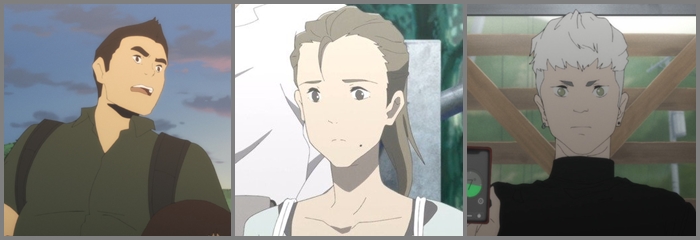
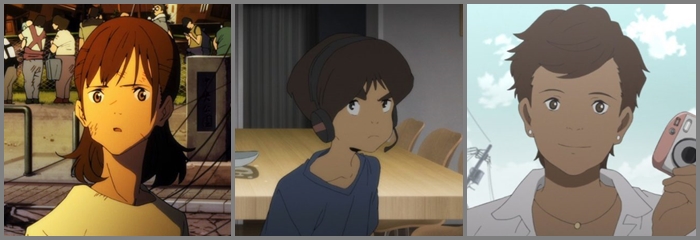
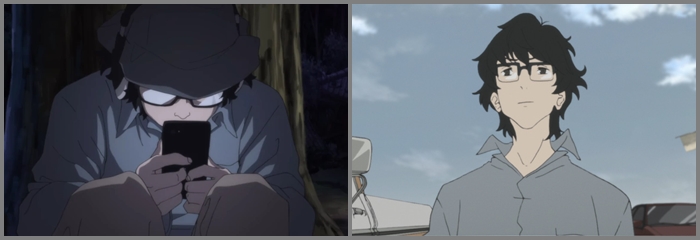
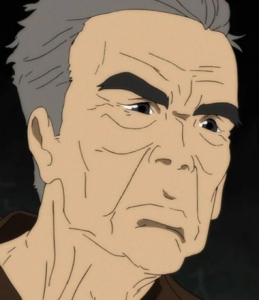 Kunio Hikita, or RAMBO
Kunio Hikita, or RAMBO